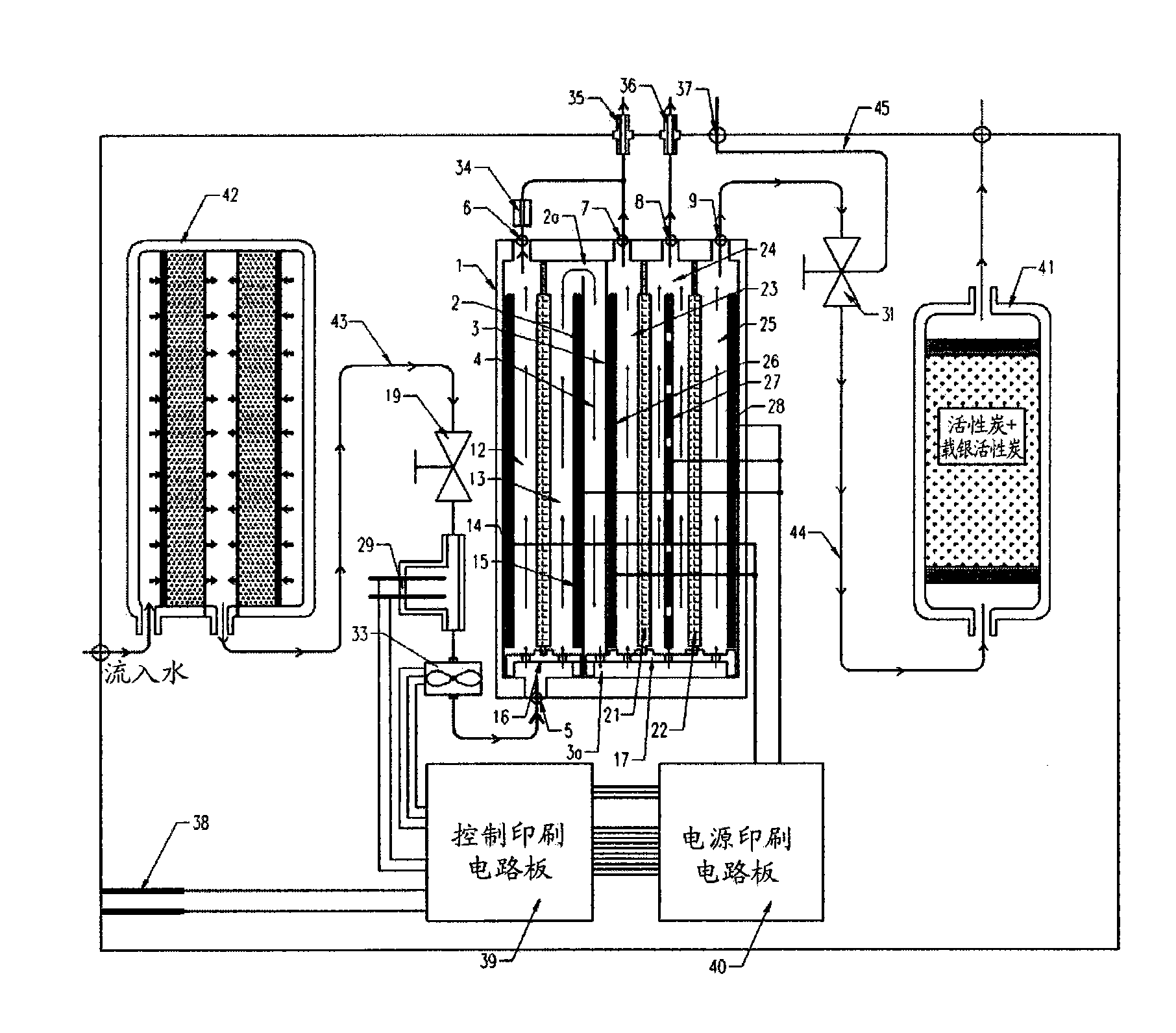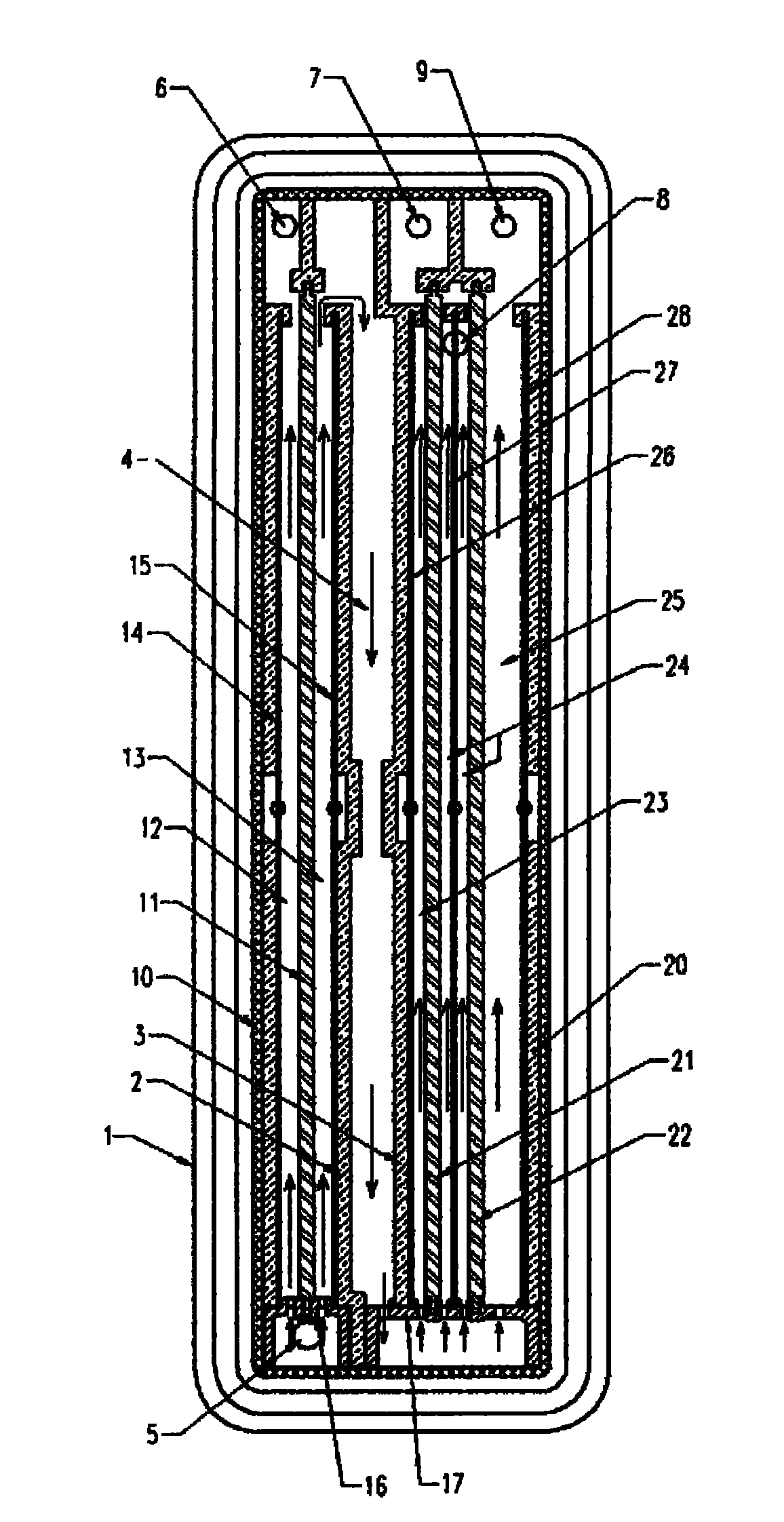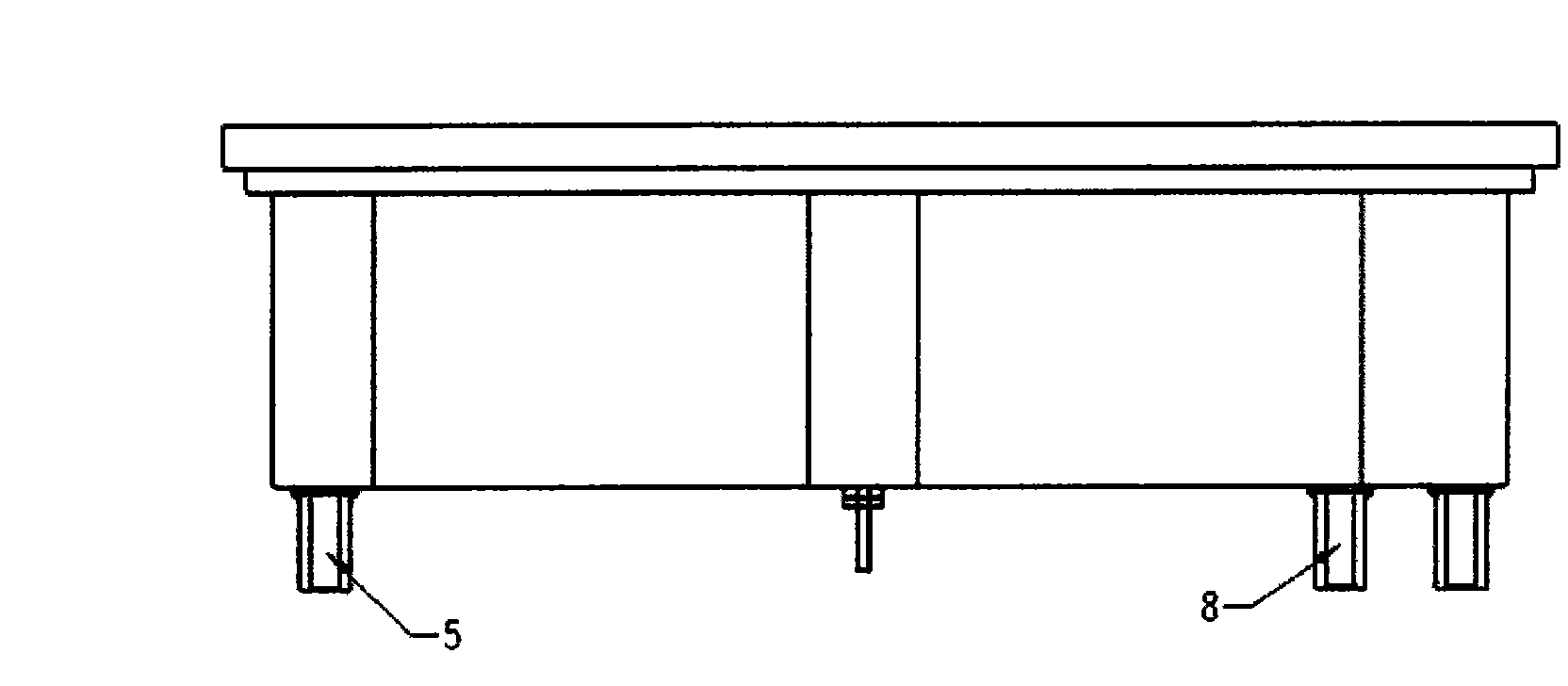Electrolytic water purifier capable of automatically controlling applied voltage based on water inflow change
A technology of applying voltage and water inflow, applied in water/sewage treatment, chemical instruments and methods, water/sewage multi-stage treatment, etc. High-quality weak alkaline water and other issues
- Summary
- Abstract
- Description
- Claims
- Application Information
AI Technical Summary
Problems solved by technology
Method used
Image
Examples
Embodiment 1
[0098] Test conditions:
[0099] -The total inflow of water into the electrolytic cell: 0.8L / min~1.5L / min
[0100] Table 1 Electrolytic characteristics of existing electrolytic water purifiers without flow-based control
[0101]
[0102] Table 2 The electrolytic characteristics of the electrolytic water purifier of the present invention controlled based on the flow rate
[0103]
[0104] Table 1 and Table 2 measured by the above-mentioned Example 1 are the measured values of the case of not controlling based on the flow rate and the case of controlling based on the flow rate. Referring to Table 1, for existing water purifiers, since there is no flow-based control, even if the flow of influent water changes, a constant voltage is still applied to the electrolytic cell, so that when the flow is small, the electrolysis is stronger, And when the flow is more, the amount of electrolysis is less. Therefore, the electrolytic characteristic changes according to the flow rat...
Embodiment 2
[0113] Test conditions:
[0114] - Total inflow water flow into electrolyzer: 1.4L / min, PH of inflow water: 7.6
[0115] Table 3 Electrolytic characteristics based on changes in the amount of electrolyte
[0116]
[0117] The above Table 3 shows the electrolysis based on the change in the amount of electrolyte by measuring the voltage and current applied to the electrolysis part based on the change in the electrolyte flowing into the electrolysis part (change in conductive resistance) and measuring the pH characteristics of each discharged water. characteristic. It can be seen here that when the amount of electrolyte is small and the conductive resistance value is large, the voltage applied to the electrolysis part is increased, and conversely, when the amount of electrolyte is large and the conductive resistance value is small, the voltage applied to the electrolysis part is decreased .
[0118] In addition, it can also be seen that there is little variation in the elec...
PUM
 Login to View More
Login to View More Abstract
Description
Claims
Application Information
 Login to View More
Login to View More - R&D
- Intellectual Property
- Life Sciences
- Materials
- Tech Scout
- Unparalleled Data Quality
- Higher Quality Content
- 60% Fewer Hallucinations
Browse by: Latest US Patents, China's latest patents, Technical Efficacy Thesaurus, Application Domain, Technology Topic, Popular Technical Reports.
© 2025 PatSnap. All rights reserved.Legal|Privacy policy|Modern Slavery Act Transparency Statement|Sitemap|About US| Contact US: help@patsnap.com



